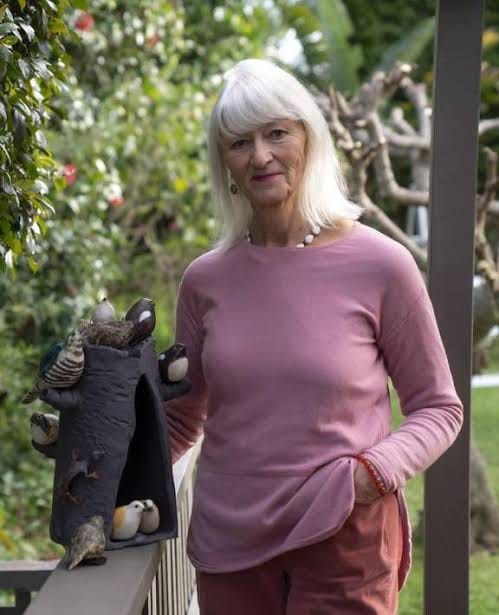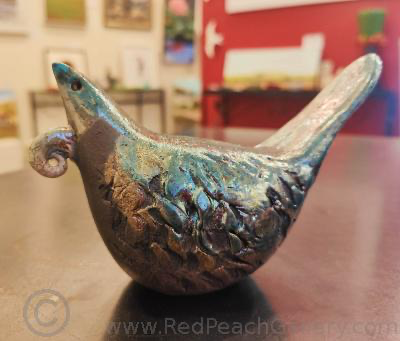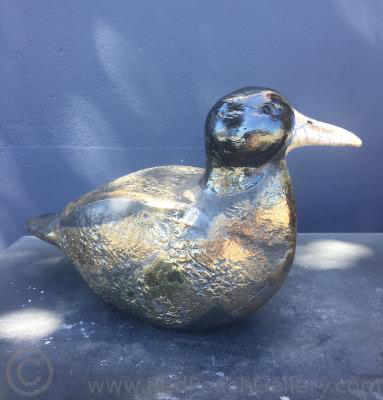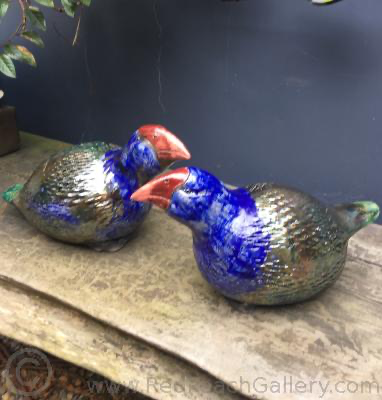Sophie Lankovsky is a self-taught ceramicist based in New Zealand who has dedicated her artistic practice to celebrating the country's native birdlife and advocating for their conservation efforts. She does so by creating exquisite clay sculptures of iconic New Zealand native birds such as the whio, tūī, takahē, kererū, and many more. She collaborates with organizations like Forest and Bird to ensure that her ceramic creations can help raise awareness about these wonderful native birds. Her efforts are timely as the different species are currently threatened by habitat loss and climate change. This is why her ceramics are aligned with the United Nations Sustainable Development Goal of Life on Land.

Lankovsky was first introduced to ceramics as a school girl in Germany, a passion she has now cultivated and intertwined with her love for wildlife through life-sized bird sculptures. Her ceramic sculptures are meticulously crafted using a traditional technique called raku pottery. The method calls for an arduous and lengthy process, which further infuses each piece with her reverence and admiration for New Zealand’s unique biodiversity.

Raku pottery originated from Japan and requires potters to remove ceramics from the kiln while steaming hot, consecutively allowing them to cool rapidly in the open air. This gives Raku pottery pieces a distinctive look, where glazes are purposefully crackled to showcase a river of deeper hues of glazes that Lankovsky hand makes for her pieces. Hand-making her glazes also means Lankovsky’s pieces have a natural-mineral-resembling earthy tone, giving her life-sized sculptures a rustic charm. Since her process requires extreme temperatures and conditions, Lankovksy’s technique can also be interpreted as a symbol of the resilience and adaptability of the native birds they depict.

Lankovsky's work has recently gained recognition. Her ceramic pieces were chosen to represent New Zealand's 63-hectare natural reserve, Blowhard Bush's 100 years of Forest & Bird conservation. This honour shows just how far her artwork’s impact is in promoting environmental awareness and giving people a way to channel their connection to nature.
Take, for example, her piece, Takahē, which depicts two birds of the titular species. The takahē are flightless birds with distinct red beaks. As of October 2023, only around 500 of them left in the wild, in fact, it is so rare that it was once thought to be extinct. Its rediscovery has also launched New Zealand’s longest-running endangered species programme, lasting for over 70 years and with hopeful results that must be continuously nurtured. Hence, by portraying the Takahē, Lankovsky is helping to renew people’s interest in its conservation. This is an essential move as most of these birds are endemic to New Zealand, meaning they exist only within New Zealand’s boundaries.

Lankovsky’s pieces highlight the beauty and fragility of New Zealand's ecosystems. They encourage locals and individuals from beyond its borders to take whatever small personal action they can to help the land they stand on to raise awareness of the appropriate steps to take when encountering these native birds. Lankovsky invites her viewers to join her in the journey towards a more sustainable and harmonious relationship with the natural world.
Find out more about Raku ceramics and other initiatives by Sophie Lankovsky on her website www.sophielankovsky.wordpress.com.
